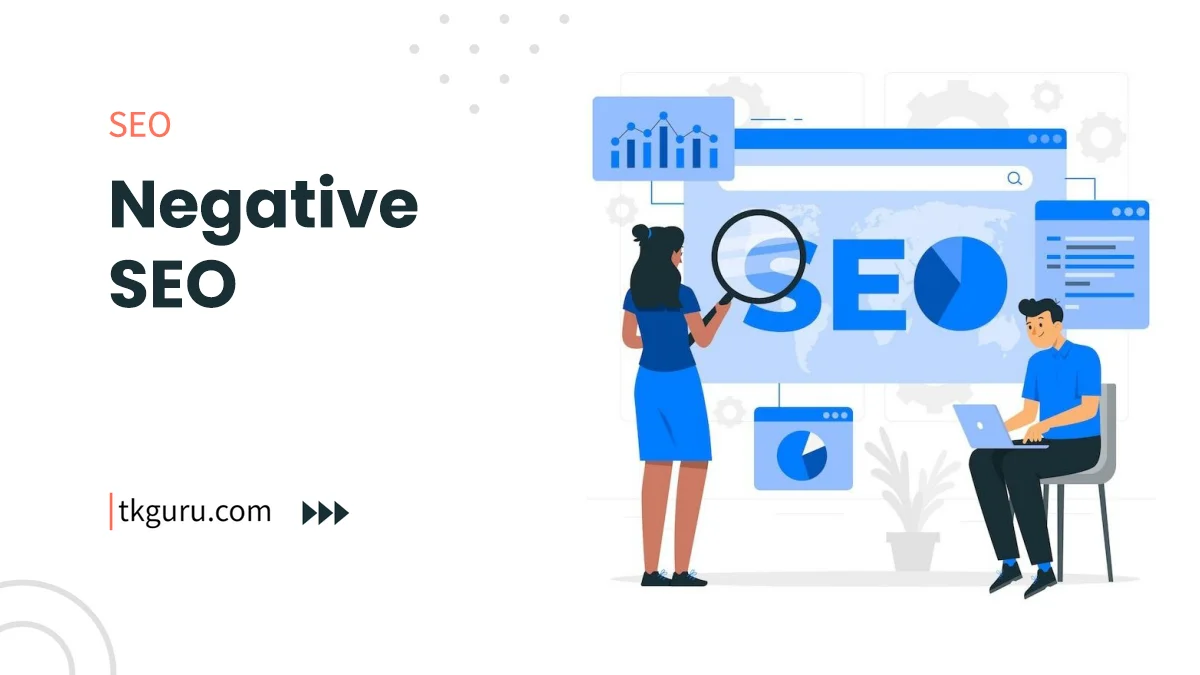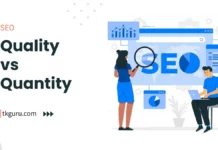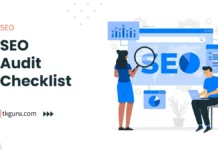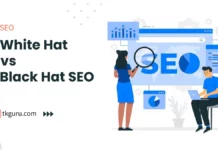Advertisements
Ratings

Negative SEO – In the world of digital competition and search engine optimization (SEO), the battlefield isn’t always fair. Negative SEO, a malevolent practice that aims to harm competitors’ websites, poses a significant threat to the online ecosystem.
Unethical actors exploit vulnerabilities in search engine algorithms to employ tactics that result in ranking penalties, traffic drops, and reputation damage.
In this comprehensive guide, we’ll delve into the concept of negative SEO, learn to recognize its telltale signs, and explore effective strategies to shield your website from its harmful effects.
Contents
1. What is Negative SEO?
1.1 Defining Negative SEO
Negative SEO refers to a set of malicious strategies employed by unscrupulous individuals to undermine a competitor’s online presence. It involves leveraging tactics that violate search engine guidelines, leading to detrimental consequences for the target website. These tactics exploit weaknesses in algorithms to manipulate search engine rankings and ultimately harm the target’s visibility.
1.2 Types of Negative SEO Techniques
Negative SEO encompasses a range of techniques designed to disrupt a website’s rankings and reputation:
- Link Spam: Unwanted, toxic backlinks are directed towards a target website, leading search engines to associate it with poor-quality sources.
- Content Scraping: Malicious actors copy content from your site and publish it elsewhere, causing duplicate content issues and potentially lowering your rankings.
- Fake Reviews: Fabricated negative reviews on platforms like Google My Business can tarnish your brand’s reputation and deter potential customers.
Recognizing these tactics is crucial for safeguarding your website against malicious intent and ensuring a positive online experience.
Table 1: Types of Negative SEO Techniques:
| Technique | Description and Impact |
|---|---|
| Link Spam | Discussing the impact of spammy and toxic backlinks. |
| Content Scraping | Explaining the consequences of duplicating content. |
| Fake Reviews | Discussing how fake reviews can harm reputation. |
2. Recognizing Negative SEO Attacks
2.1 Sudden Ranking Drops
One of the most apparent signs of a negative SEO attack is a sudden and significant drop in search engine rankings. Such unexpected declines can be attributed to malicious actions aimed at undermining your site’s credibility.
2.2 Unnatural Backlink Profiles
Monitoring your backlink profile is essential for identifying negative SEO attacks. If you notice a sudden influx of low-quality, unrelated backlinks, it could indicate an attempt to manipulate your rankings.
2.3 Duplicate Content
Scraping content from your website and publishing it on other domains leads to duplicate content issues. As search engines struggle to determine the original source, your rankings may suffer.
Table 2: Recognizing Negative SEO Attacks:
| Indicators | Description and Importance |
|---|---|
| Sudden Ranking Drops | Discussing the implications of sudden ranking decreases. |
| Unnatural Backlink Profiles | Explaining how to identify suspicious backlink patterns. |
| Duplicate Content | Highlighting the risks of content scraping. |
3. Protecting Your Site from Negative SEO
3.1 Regular Monitoring
Vigilance is your greatest weapon against negative SEO attacks. Regularly monitor changes in rankings, traffic, and backlink profiles to detect anomalies early.
3.2 Strengthening Security
Implement robust security measures to safeguard your website from hacking attempts and unauthorized access. Utilize strong passwords, employ two-factor authentication, and keep your software updated.
Table 3: Protecting Your Site from Negative SEO:
| Approach | Description and Importance |
|---|---|
| Regular Monitoring | Discussing the role of consistent vigilance. |
| Strengthening Security | Highlighting security measures for safeguarding your site. |
4. Precautions for Content Scraping
4.1 Copyright and DMCA Notices
In the battle against content scraping, legal avenues such as copyright notices and Digital Millennium Copyright Act (DMCA) notices can be potent tools. If you find your content copied without permission, sending a DMCA notice to the hosting provider can lead to the removal of the infringing material.
4.2 Structured Data and Canonical Tags
Implementing structured data and canonical tags within your content can help indicate the original source to search engines. Canonical tags guide search engines to the preferred version of a page, and structured data markup establishes your ownership of content.
Table 4: Precautions for Content Scraping:
| Precaution | Description and Importance |
|---|---|
| Copyright and DMCA Notices | Discussing legal actions to combat content scraping. |
| Structured Data and Canonical Tags | Explaining technical measures against scraping. |
5. Building a Strong Online Reputation
5.1 Reputation Management
Maintaining a positive online reputation is paramount. Negative SEO attacks can tarnish your brand’s image, but a strong reputation can mitigate their impact. Regularly monitor mentions of your brand and address negative content promptly.
5.2 Quality Content Creation
One of the best defenses against negative SEO is creating high-quality, original content. Quality content naturally attracts organic backlinks, which strengthens your website’s authority and shields it against malicious tactics.
Table 5: Building a Strong Online Reputation:
| Aspect | Description and Importance |
|---|---|
| Reputation Management | Explaining the role of reputation in defense. |
| Quality Content Creation | Discussing the impact of content on reputation. |
6. The Role of Webmaster Tools
6.1 Google Search Console
Google Search Console is a valuable tool for monitoring your website’s health and detecting potential negative SEO issues. It provides insights into indexing, penalties, and security concerns.
6.2 Bing Webmaster Tools
Bing Webmaster Tools serves as a counterpart to Google Search Console, offering insights into your site’s performance on Bing’s search engine. It aids in identifying issues and monitoring your website’s health.
Table 6: Webmaster Tools for Defense:
| Tool | Description and Importance |
|---|---|
| Google Search Console | Discussing its role in monitoring site health. |
| Bing Webmaster Tools | Highlighting its significance in protection. |
Conclusion
In the realm of SEO, the shadows cast by negative tactics can cast a pall over your hard work. Recognizing and defending against negative SEO attacks requires a multifaceted approach.
By understanding the malicious tactics at play and staying vigilant, you can safeguard your website’s reputation, rankings, and online presence.
Remember that the fight against negative SEO is not just a technical battle—it’s also about nurturing a strong online reputation, creating quality content, and utilizing tools that provide insights into your site’s health.
By adopting a proactive stance and remaining informed about the evolving landscape, you can fortify your website against malicious intent and ensure its continued success in the digital domain.
As you navigate the intricate world of SEO, arm yourself with knowledge, tools, and strategies to combat negative SEO. By doing so, you’ll not only protect your site but also contribute to a healthier and more ethical online environment.
Negative SEO FAQs
What is Negative SEO?
Negative SEO refers to malicious tactics employed by individuals or competitors to harm a website's search engine rankings and online reputation.
This can include actions like building spammy backlinks, hacking, content scraping, and more.
How does Negative SEO impact a website?
Negative SEO can have detrimental effects on a website's rankings, visibility, and credibility.
It can lead to Google penalties, traffic loss, and a damaged online reputation.
What are some common Negative SEO tactics?
Common Negative SEO tactics include:
- Building low-quality or spammy backlinks to your site.
- Scraping and duplicating your content on other websites.
- Hacking your website and injecting malicious code.
- Creating fake social media profiles to spread false information.
How can I protect my website from Negative SEO?
To protect your website from Negative SEO:
- Regularly monitor your backlink profile using tools like Google Search Console and other SEO software.
- Secure your website with strong passwords and security measures.
- Monitor your website's performance and any sudden drops in rankings or traffic.
How can I recover from Negative SEO attacks?
If you suspect a Negative SEO attack, take these steps:
- Disavow spammy backlinks using Google's Disavow Tool.
- Remove or request the removal of duplicate content.
- Secure your website and fix any vulnerabilities.
- Submit a reconsideration request to Google if you've been penalized.
Negative SEO can be damaging, but taking proactive measures to monitor and safeguard your website can help mitigate its impact.
Regularly review your website's performance, backlink profile, and security to ensure you catch and address any Negative SEO attempts promptly.
| Web Hosting | Website |
| WordPress | Google Adsense |
| SEO | Affiliate Marketing |
| Blogging | YouTube |
Recent Posts
- Top 6 SEO Companies in Ahmedabad 2024: Unlock Success with the Top SEO Companies in Ahmedabad
- Top 5 SEO Companies in Kanpur 2024: Discover the Top-Rated SEO Companies in Kanpur
- Quality vs Quantity: The Importance of High-Quality Backlinks
- E-A-T and SEO: Expertise, Authoritativeness, Trustworthiness
Related Tags
negative seo check, backlink tracking tool, monitor backlinks pricing






